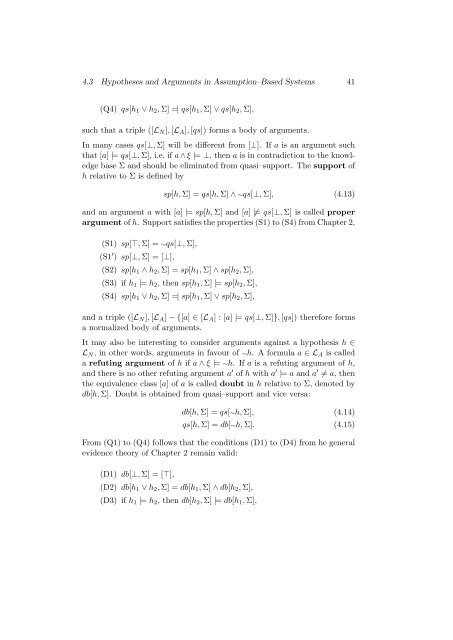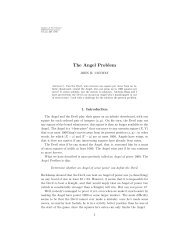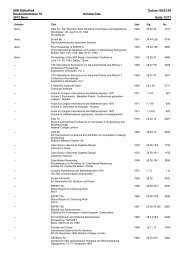Propositional Argumentation Systems and Symbolic Evidence Theory
Propositional Argumentation Systems and Symbolic Evidence Theory
Propositional Argumentation Systems and Symbolic Evidence Theory
Create successful ePaper yourself
Turn your PDF publications into a flip-book with our unique Google optimized e-Paper software.
4.3 Hypotheses <strong>and</strong> Arguments in Assumption–Based <strong>Systems</strong> 41<br />
(Q4) qs[h 1 ∨ h 2 , Σ] =| qs[h 1 , Σ] ∨ qs[h 2 , Σ],<br />
such that a triple ([L N ], [L A ], [qs]) forms a body of arguments.<br />
In many cases qs[⊥, Σ] will be different from [⊥]. If a is an argument such<br />
that [a] |= qs[⊥, Σ], i.e. if a ∧ ξ |= ⊥, then a is in contradiction to the knowledge<br />
base Σ <strong>and</strong> should be eliminated from quasi–support. The support of<br />
h relative to Σ is defined by<br />
sp[h, Σ] = qs[h, Σ] ∧ ∼qs[⊥, Σ], (4.13)<br />
<strong>and</strong> an argument a with [a] |= sp[h, Σ] <strong>and</strong> [a] ̸|= qs[⊥, Σ] is called proper<br />
argument of h. Support satisfies the properties (S1) to (S4) from Chapter 2,<br />
(S1) sp[⊤, Σ] = ∼qs[⊥, Σ],<br />
(S1 ′ ) sp[⊥, Σ] = [⊥],<br />
(S2) sp[h 1 ∧ h 2 , Σ] = sp[h 1 , Σ] ∧ sp[h 2 , Σ],<br />
(S3) if h 1 |= h 2 , then sp[h 1 , Σ] |= sp[h 2 , Σ],<br />
(S4) sp[h 1 ∨ h 2 , Σ] =| sp[h 1 , Σ] ∨ sp[h 2 , Σ],<br />
<strong>and</strong> a triple ([L N ], [L A ] − {[a] ∈ [L A ] : [a] |= qs[⊥, Σ]}, [qs]) therefore forms<br />
a normalized body of arguments.<br />
It may also be interesting to consider arguments against a hypothesis h ∈<br />
L N , in other words, arguments in favour of ∼h. A formula a ∈ L A is called<br />
a refuting argument of h if a ∧ ξ |= ∼h. If a is a refuting argument of h,<br />
<strong>and</strong> there is no other refuting argument a ′ of h with a ′ |= a <strong>and</strong> a ′ ≠ a, then<br />
the equivalence class [a] of a is called doubt in h relative to Σ, denoted by<br />
db[h, Σ]. Doubt is obtained from quasi–support <strong>and</strong> vice versa:<br />
db[h, Σ] = qs[∼h, Σ], (4.14)<br />
qs[h, Σ] = db[∼h, Σ]. (4.15)<br />
From (Q1) to (Q4) follows that the conditions (D1) to (D4) from he general<br />
evidence theory of Chapter 2 remain valid:<br />
(D1) db[⊥, Σ] = [⊤],<br />
(D2) db[h 1 ∨ h 2 , Σ] = db[h 1 , Σ] ∧ db[h 2 , Σ],<br />
(D3) if h 1 |= h 2 , then db[h 2 , Σ] |= db[h 1 , Σ],








